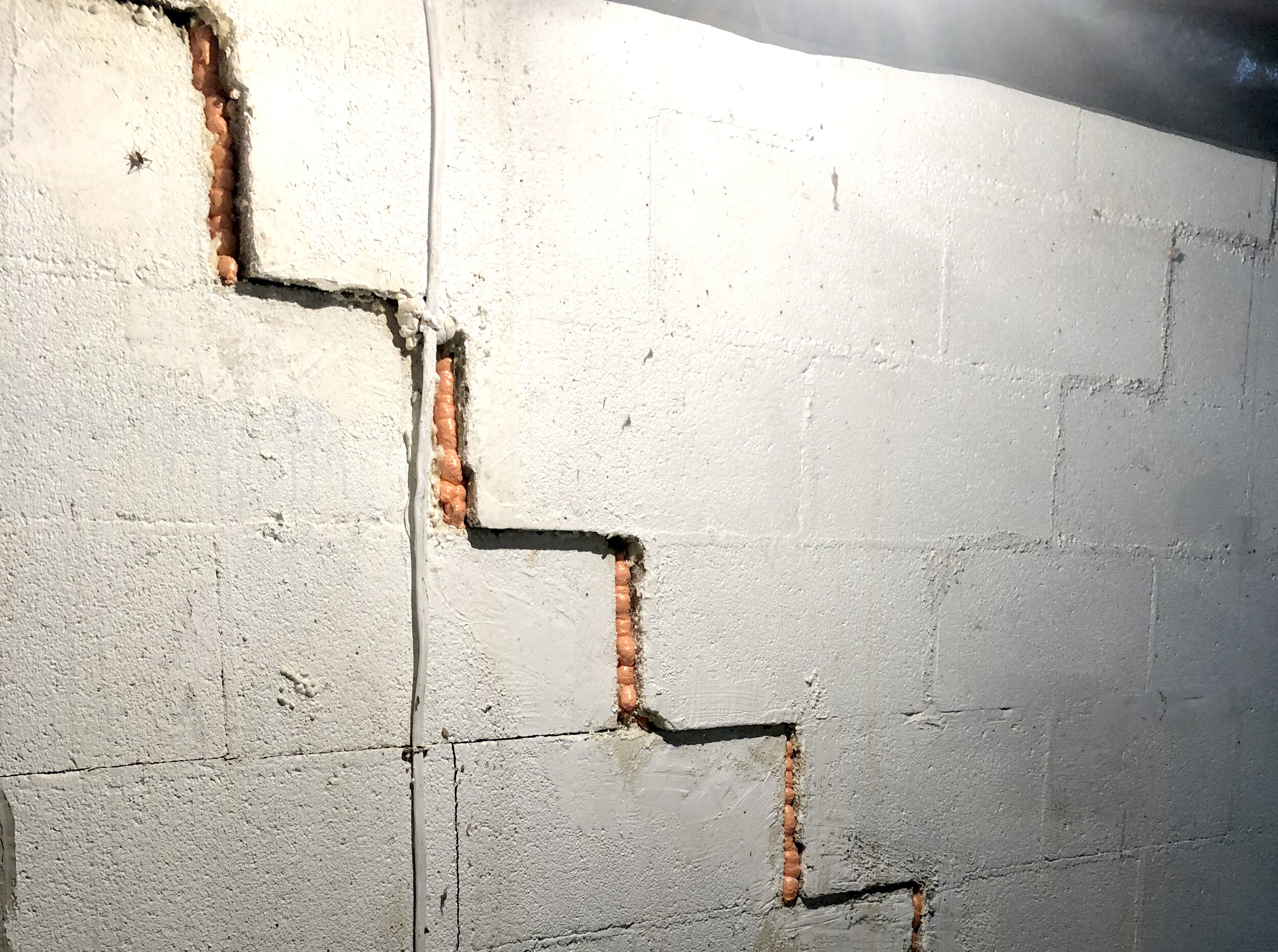
Most plumbing leaks are easy to spot a dripping faucet, a wet cabinet, or water pooling under the sink. But not all leaks are that obvious. Some of the most destructive plumbing issues happen beneath your home’s foundation, quietly saturating the soil, destabilizing the structure, and leading to long-term damage.
When left undetected, these sub-slab leaks can create conditions that result in foundation settlement, heaving, or cracking. And because the leak is hidden, homeowners often don’t discover the issue until visible symptoms like floor cracks or warped walls appear.
In this article, we’ll explore how plumbing leaks beneath your foundation occur, what damage they cause, how to recognize the signs early, and how foundation professionals work with plumbing experts to repair and stabilize your home.
🔑 Key Takeaways
- Hidden plumbing leaks beneath the foundation can erode or saturate the soil, causing movement and cracking.
- Common warning signs include high water bills, unexplained dampness, and uneven floors.
- Over time, these leaks can lead to foundation settlement, upheaval, or structural damage.
- Repair often involves fixing the leak and stabilizing the foundation with piers or slab lifting.
- Early detection minimizes long-term costs and protects your home’s structural integrity.
Why Plumbing Leaks Under the Foundation Are So Dangerous
A plumbing leak beneath your home doesn’t just waste water it alters the soil environment under the foundation. Depending on the soil type and moisture volume, this can cause the foundation to shift upward, downward, or unevenly, leading to visible and invisible damage.
Here’s what happens:
- Soil Saturation
Leaking water soaks the soil, especially in expansive clay, which swells and puts upward pressure on the slab or footings. - Soil Erosion or Washout
In sandy or granular soils, the water may wash away the support beneath the foundation, causing voids. - Differential Movement
Uneven moisture causes one side of the foundation to move differently than the other, creating cracks and structural stress. - Increased Hydrostatic Pressure
Excess moisture can increase lateral pressure on basement walls, leading to bowing, leaking, or cracking.
Common Causes of Sub-Foundation Plumbing Leaks
1. Aging Pipes
Older homes with galvanized steel or cast iron pipes are prone to corrosion and eventual failure.
2. Improper Installation
Poor pipe alignment, shallow depth, or inadequate support can lead to cracks or joint separation.
3. Tree Root Intrusion
Roots can infiltrate underground lines, especially drain or sewer pipes, causing blockage and leaks.
4. Slab Shifting or Settlement
If the foundation moves even slightly, it can strain or snap embedded pipes, especially rigid lines.
5. Thermal Expansion
Hot water pipes expand and contract with use. Over time, this stress can lead to leaks beneath slabs.
Signs You May Have a Plumbing Leak Beneath Your Foundation
Sub-slab leaks are difficult to detect without professional tools, but these symptoms are strong indicators:
| Sign | What It Could Indicate |
|---|---|
| Unexplained increase in water bill | Constant leak beneath slab, especially in hot water line |
| Damp or warm spots on flooring | Water rising through slab or floor materials |
| Mold or mildew smell in basement | Chronic moisture from hidden leak |
| Cracks in walls, floors, or tile | Foundation movement from soil saturation or erosion |
| Sloping or uneven floors | Settlement or heaving due to soil moisture imbalance |
| Audible water running with no fixtures on | Continuous flow from leak below the surface |
Real Consequences of Ignoring a Leak
1. Foundation Settlement
Washed-out or saturated soil loses its ability to support the weight of your home. This can cause one section of the foundation to sink, leading to:
- Wall cracks
- Gaps between ceilings and walls
- Sticky doors and windows
2. Foundation Upheaval
In expansive clay soils, excess water from a leak can cause the soil to swell, pushing the slab upward and creating:
- Buckled flooring
- Cracked tiles
- Wall movement and distortion
3. Structural Fractures
Over time, the repeated expansion and contraction of soil can create deep structural cracks, sometimes requiring expensive piering or full slab replacement.
4. Mold Growth and Indoor Air Quality Issues
Leaks that go undetected create a perfect environment for mold and mildew, which can lead to respiratory problems and degrade indoor air quality — especially in finished basements or crawlspaces.
How Foundation and Plumbing Experts Work Together
Step 1: Leak Detection
Professional plumbers use advanced tools like:
- Pressure tests
- Acoustic listening devices
- Thermal imaging
- Moisture meters
These help pinpoint the location of the leak beneath the foundation without invasive digging.
Step 2: Plumbing Repair
Depending on the leak’s location and severity, plumbers may:
- Excavate and replace the damaged section of pipe
- Re-route plumbing around the slab
- Use pipe lining or trenchless repair methods (if suitable)
Step 3: Foundation Evaluation
Once the leak is repaired, foundation specialists assess whether the structure has shifted or become unstable.
This includes:
- Elevation measurements
- Crack inspection
- Floor slope mapping
- Wall movement analysis
Step 4: Structural Repair
If the foundation has settled or heaved, stabilization methods may include:
- Push piers or helical piers to lift and support settled areas
- Slab jacking (polyjacking) to fill voids beneath the concrete
- Carbon fiber or steel reinforcement for basement walls under pressure
- Waterproofing systems to manage any future moisture issues
Real-Life Example: A Leak That Nearly Cost a Foundation
A homeowner in Roanoke, VA, noticed their hardwood floors were starting to warp and develop dark spots in the kitchen. Thinking it was humidity or a spill, they ignored it — until a large diagonal crack appeared in the living room wall.
Seal-Tite Basement Waterproofing was called to investigate. Working with a local plumber, they discovered:
- A slow leak in a hot water line beneath the slab.
- Saturated clay soil beneath the center of the home.
- Slab upheaval that had lifted interior flooring by nearly ¾ inch.
Solution Provided:
- The leak was repaired using minimally invasive trenchless methods.
- A portion of the slab was removed and re-leveled.
- Carbon fiber straps were added to stabilize wall movement.
- Drainage and dehumidification systems were installed to prevent future moisture buildup.
The homeowner avoided a full foundation replacement by acting before the damage progressed further.
FAQs: Sub-Slab Plumbing Leaks and Foundation Damage
Can a leak under my foundation cause a crack?
Yes — especially if it causes soil to shift, erode, or swell beneath the concrete slab or walls.
Is a higher water bill the only clue?
No. Many homeowners also notice warm floors, moldy smells, cracked tiles, or sloping rooms. Water bills are just one indicator.
Will homeowner’s insurance cover the repair?
It depends on your policy. Some will cover the plumbing repair but not the foundation damage, or vice versa. Check with your provider.
How can I prevent future leaks?
- Have aging pipes inspected annually.
- Avoid planting deep-rooted trees near water lines.
- Invest in moisture monitoring if you live in clay-rich soil areas.
Should I wait to fix the foundation until after the leak is repaired?
Yes — but don’t wait too long. Fix the leak first, then have your foundation evaluated immediately after to address any resulting damage.
Conclusion: Don’t Let a Hidden Leak Undermine Your Home
Plumbing leaks beneath your foundation aren’t just a plumbing problem — they’re a structural one. What begins as a slow drip can become a costly and disruptive issue if it leads to soil movement, cracking, or instability beneath your home.
The sooner the leak is identified and repaired, the greater the chance you’ll avoid serious foundation damage. And if damage has already occurred, a professional foundation team can design a targeted repair plan that stabilizes your home and prevents further problems.
If you suspect a hidden leak under your home or are seeing signs of movement, contact Seal-Tite Basement Waterproofing today. Our team works hand-in-hand with trusted plumbing professionals to identify the source, stop the damage, and restore your foundation — from the ground up.

Seal-tite Basement Waterproofing Co. is a full service basement environment contractor. We carry an A+ Better Business Bureau rating. We repaired over 40,000 homes and structures in Virginia, West Virginia, Tennessee, and North Carolina. We are fully insured and licensed. We have worked in all types of locations, including residential and commercial locations, government agencies, colleges, hospitals, churches, and condo associations.
Seal-tite® offers a lifetime transferable warranty. We carry a Class A Contractor’s License and we are fully insured. Our satisfied customers range from government agencies to businesses, hospitals, colleges, churches, and thousands of homeowners. Your home is probably the single largest investment you will make in your lifetime. Don’t wait, call Seal-tite® to help make your home dry, safe and livable.

